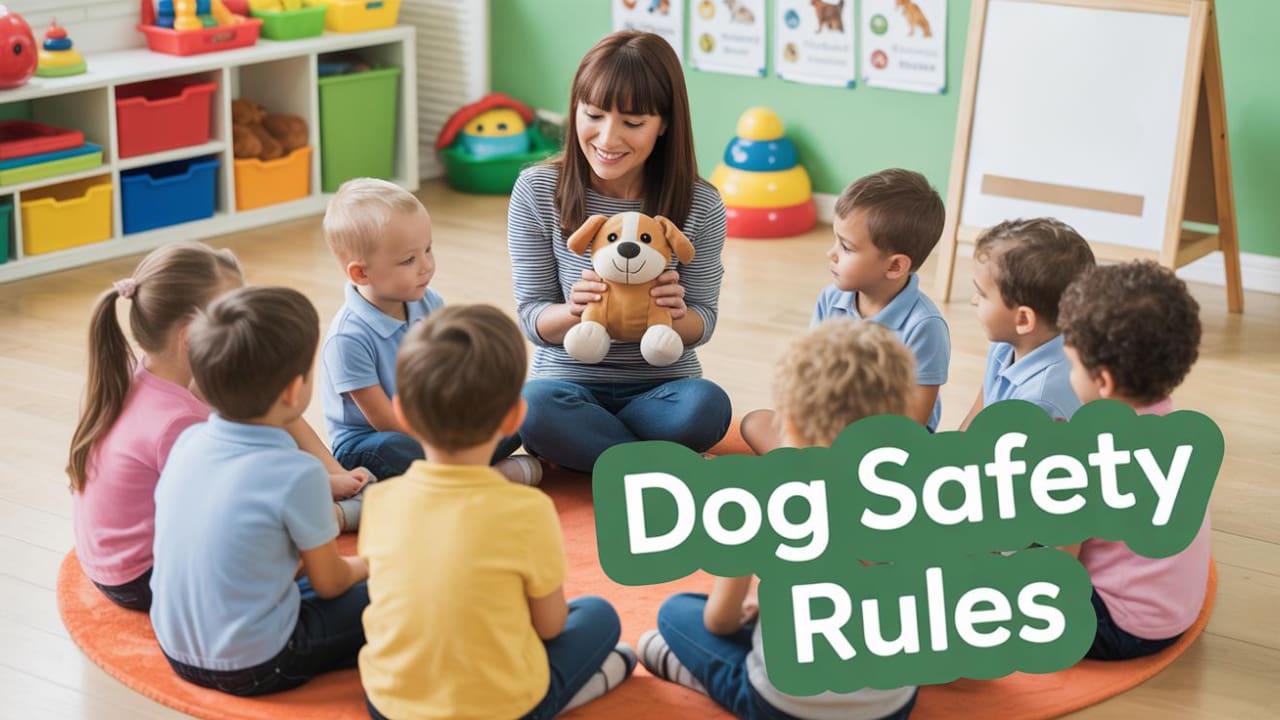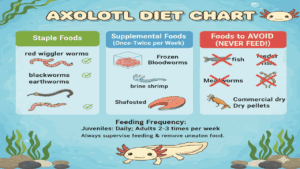Dog Safety for Preschoolers (2025): Expert Rules, Body Language Tips, Hygiene Habits, and Myths to Avoid
It’s quite a heartwarming image when you think about it. Your preschooler child laughing as they run toward the family dog. Your toddler giving the animal’s face a tight squeeze. However, depending on how prepared you (the adults) are, these actions can be rather risky.
Dog safety for preschoolers and toddlers should begin with some simple rules. First, the kids should not disturb the dog while they are eating. Second, they should wash their hands after playing with the pet. And third, you (yes, this one’s on you) should teach your children how to read some signs your dog shows them, like a tucked tail or stiff posture.
Pediatric experts say that dog bite injuries to kids are a lot more common than you might want to let yourself believe. And those that happen at home are usually because of their family pets. This means your supervision is absolutely non-negotiable.
Remember, teach your children to avoid certain common mistakes when handling your dog. Don’t let your toddler hug them too tightly. And never assume that small dogs are safer. You’ll be paying your pediatrician more visits if you’re not careful.
Try setting up a per “safe zone,” and invest in some early hygiene routines. You should also teach your kids how to touch your dog gently. These can help protect your children and even nurture respect and empathy in them.
Now, let’s see what small adjustments you can make today to help you create a safer, happier interaction between your precious human children and your adorable animal pal.
Quick Summary for Busy Parents
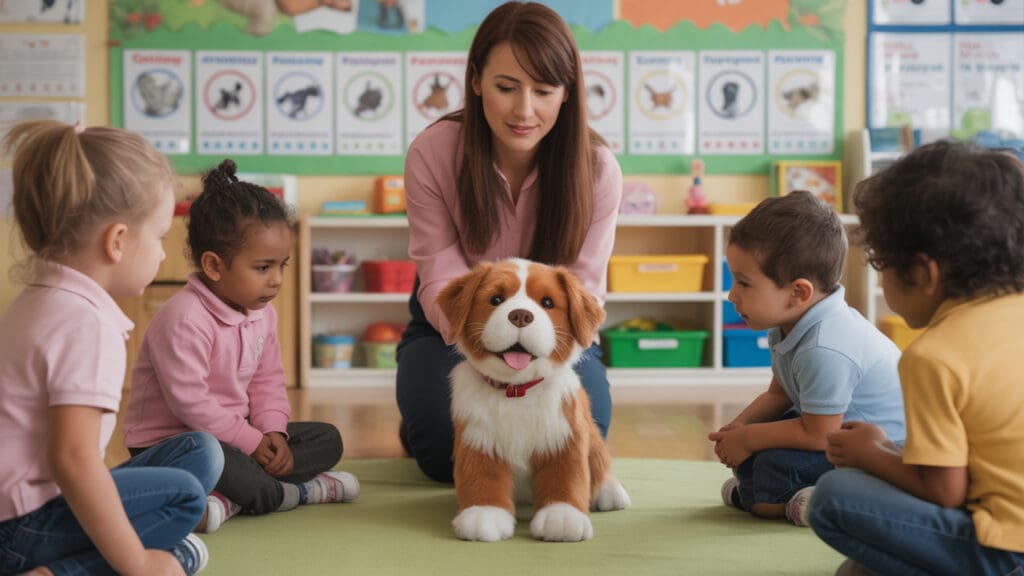
- Supervision is Non-Negotiable: Never leave a preschooler and dog alone – most dog bites in kids affect the head and neck.
- Gentle Hands, Open Palms: Teach proper petting from day one. Children ages 1–5 are at the highest risk.
- Respect the Safe Zone: Beds and crates are off-limits. Resource guarding causes nearly half of bites in kids under 6.
- Play, Then Wash: Always wash hands after play. It’s the simplest way to reduce illness and bacterial transmission.
- Wagging Isn’t Always Happy: Look for warning signs like stiff posture, “whale eye,” or tucked tails.
- All Dogs Can Bite: Even beloved family pets – most child bites come from the family’s own dog.
Pet Safety for Preschoolers: What It Means and Core Dog Safety Rules
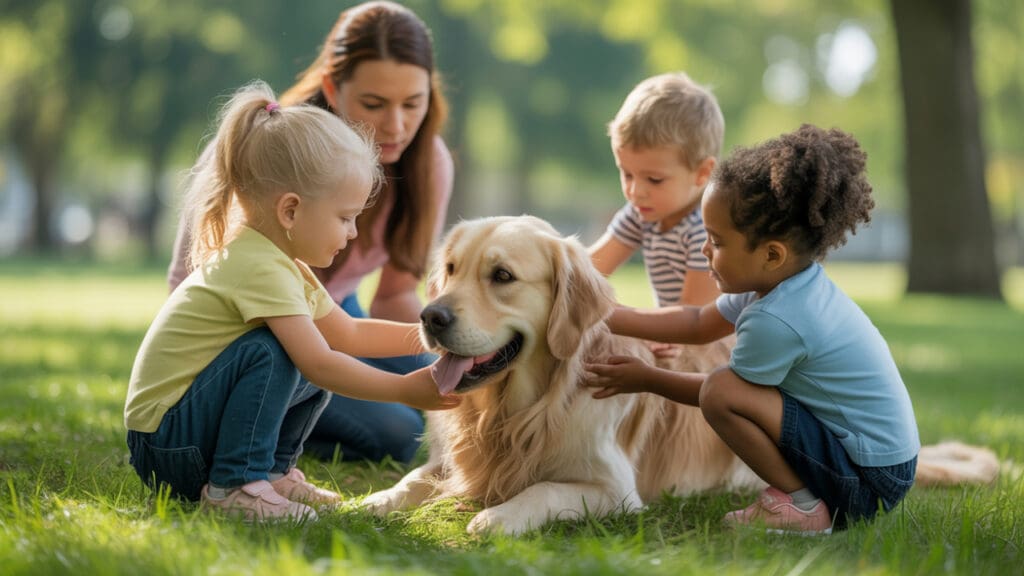
If you have a preschooler at home, you probably know how curious they can be. More likely than not, they will extend that curiosity to the family dog.
Perhaps you might have seen those videos about how children can do whatever they want to a pet, and the animal still doesn’t retaliate. But in reality, not having a clear boundary can lead to something unpredictable, even with your gentlest pet.
Now, pet safety for preschoolers is about creating an environment where your kids can learn to respect the animal. However, supervision should remain active. It’s not just about you preventing your children from getting bitten. You want to make sure that your dog feels calm, secure, and protected from the preschooler’s rough handling (you know how kids can be).
Veterinarians say that we should teach our children some simple “golden rules” when handling a pet. They should always ask before petting the animal, use gentle touches with an open hand, and never disturb the dog while they’re eating or sleeping.
Remember, your growing kids do well with repetition and structure. So, the rules you set should be consistent across all environments, be they your home or the playground.
You can try doing some role-playing to help train your kids. Show them the right, safe approaches to handling the family dog, and let them mimic your behavior. This will cost you nothing in practice, but the habit built can last a long time.
Also, as a pet parent, you should try to create a “safe zone” for your dog. It can be a space within the baby gates or maybe just a gate. This is so that your canine friend can retreat and calm down when play gets overwhelming.
Teaching You Kids: Dog Safety for Toddlers vs. Dog Safety for Preschoolers
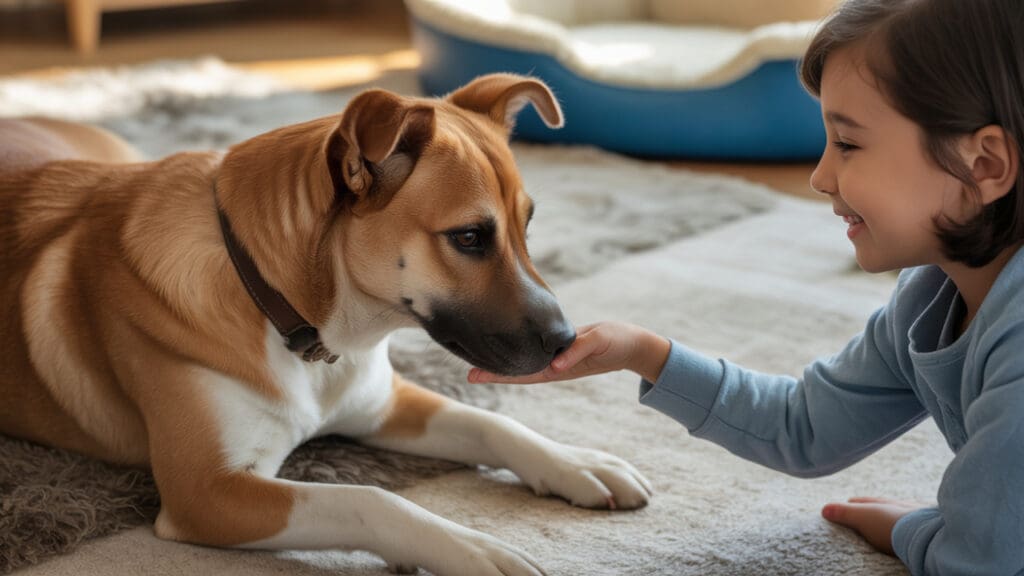
You’re probably a parent if you’re reading this. You would know that toddlers and preschoolers see the world quite differently. And those differences should be taken into consideration when you teach them about dog safety.
Remember, pet safety for toddlers will need strict supervision and control. After all, your little one is an impulsive explorer who doesn’t really care about consequences. So, make your rules simple, as simple as you possibly can.
Experts recommend that we try using very short phrases. For example, you could try “gentle hands,” “quiet voices,” and “ask Mommy first.” You should always model for them and be consistent so that they are not confused.
Remember, you shouldn’t let your toddler and your dog alone unsupervised. You might think your dog knows the baby, but things can be unpredictable around toddlers. And if your dog’s startled by them, you really can’t tell what accidents might take place. Try setting up a barrier if you must to keep both of them safe.
Now, your preschooler, on the other hand, is ready for more structured learning. You can role-play with them and teach them how to read some simple signals (we’ll get into those next).
If you want to be extra secure about this, you can have them take part in classroom lessons on animal safety for preschoolers. Professional teachers have many ways (like using puppets, posters, or short videos) to show your preschooler how to greet a dog the right way.
At home, you, the parents, should make safety fun. Turn the rules into a game, and give your children chances to “earn points” for remembering to ask before petting your family dog or for washing hands after playing with them.
Try This 5-Minute Role-Play Game
Use a stuffed animal and practice these scenarios with your preschooler. You be the dog first, then switch roles:
The Right Approach:
“Okay, I’m a dog you’ve never met. What’s the first thing you do? That’s right, you ask Mommy! And then you hold out your hand for me to sniff. Good job!”
The Sleeping Dog:
“I’m sleeping in my bed. What do you do? Do you come and poke me? No! You let the sleeping dog lie. You walk away quietly.”
The Eating Dog:
“I’m eating my dinner. Is it time to pet me? No! You never bother an eating dog. You wait until I’m all done.”
(This is crucial since many bites happen when children interrupt a dog during meals.)
Practice this daily for just 5 minutes to build lasting safety habits.
Reading Dog Body Language for Kids: Animal Safety for Preschoolers
Children often think that a dog wagging their tail means they are happy. It’s not just the kids; some of us adults think that, too. But the same wag doesn’t always point to happiness; it can be a signal for stress, fear, or even aggression.
This means teaching your preschooler how to read your dog’s body language is rather important for improving animal safety for them. The logic is simple. When the human knows what the dog’s saying, they likely won’t push too far.
For the tail, you should let your kid know that if the dog’s wagging loosely at mid-level, it usually means they are relaxed. But if their tail is still, held high, or is wagging too fast, that could mean the dog’s either stressed or overexcited. And if your dog tucks their tail, it’s quite a clear sign of fear.
Next, let’s check out their ears. Teach your preschooler to observe this. If your dog’s ears are forward, they are most likely curious or alert about something. But if their ears are pulled back or pinned flat, it can mean that they are either nervous or uncomfortable.
For eyes, you’d want your kid to see some soft blinking that suggests that your dog is calm. Wide eyes with the whites showing means fear, and that’s a warning sign. People often call this “whale eye.” Also, don’t let your child do a stare-down with your dog. A hard, unblinking stare from the animal usually means aggression.
Then, there’s the mouth. If your dog’s mouth is loose, open, and panting, it likely means they’re relaxed. Otherwise, tightly closed lips, curling lips, or bared teeth are all rather strong warning signs that your kid needs to back away.
And lastly, your dog’s overall body posture will tie all the signals together. A friendly dog will usually show you a loose, wiggly stance. However, if their posture is still or frozen, or if they lean forward, it can mean the dog is being defensive or even aggressive.
Dog Body Language Cheat Sheet for Parents
| What to Look For | Happy & Relaxed | Stressed or Anxious | Aggressive or Fearful |
| Tail | Loose, mid-level wag or circular sweep | Low, slow wag, tucked between legs, or rigid against belly | High, stiff, rapid twitch-like wag or motionless high carry |
| Ears | Relaxed, natural position or softly forward | Pulled back flat against head or pinned down | Rigidly forward and alert, or completely flattened back |
| Eyes | Soft, almond-shaped, gentle blinking, squinting | Avoiding eye contact, rapid blinking, “whale eye” (whites showing) | Hard, intense, unblinking stare with dilated pupils |
| Mouth | Relaxed, slightly open, soft panting | Tight, closed mouth, excessive lip licking, yawning when not tired | Lips curled back, teeth bared, snarling, muzzle wrinkled |
| Body | Loose, wiggly posture, play bow, weight evenly distributed | Stiff, frozen stance, cowering, leaning away, trembling | Rigid, squared-off stance, leaning forward, raised hackles |
| What to Do | Safe to interact with permission and gentle approach | Stop interaction immediately. Give the dog space and time to calm down | Back away slowly. Do not run, yell, or make sudden movements. Avoid eye contact |
Children often struggle to recognize when a dog is anxious or stressed. Always supervise interactions, teach gentle handling, and when in doubt, create space between your child and the dog.
Hygiene, Health, and Dog Safety for Preschoolers: Safe Pet Care Habits
Now, teaching your children manners around your pet is great. But let’s not forget that hygiene is just as important for them. Your dog is likely to carry germs and sometimes parasites or allergens that don’t harm them, but they can make your human child sick.
The first thing you have to do is to help your kid develop the habit of washing their hands after playing with the animal. You should know that even if your dog is healthy, contact with feces or contaminated food or water may transmit Salmonella.
Teach your kid this simple line and repeat, “play, then wash.” It’s probably one of the most effective ways to reduce risk. Invest in some hand wipes, too, if needed. They might cost a bit extra, but it’s a good safety measure for your kid and the entire family.
You can also turn hygiene into a fun ritual. For example, teach your kid to sing a song while washing their hands. It keeps them focused on cleaning up. You can also try giving them colorful soap to encourage them to wash their hands consistently. These are easy ways to reinforce the habit.
Now, don’t think your preschooler can’t help in taking care of your dog. You just need to guide them through the process. You can teach your kid how to fill the canine’s water bowl and help gather their toys. These instill responsibility.
You can also teach your child how to brush your dog’s fur, but supervise them and guide them to do so gently. You don’t want them to get frustrated with some tangled fur and start handling things roughly.
The next thing you need to let your kid know is the designated “no-go zone.” Teach your child that the space is meant for your dog to be alone, to feel safe. Let them know that your dog needs it for their emotional health (to manage their stress level). Your preschooler will gradually understand the importance of downtime.
Last but not least, take your pet for regular veterinary checkups. You should also invest in some flea or parasite preventative measures to help safeguard your family.
Supervision and Environment Setup for Dog Safety for Preschoolers
It only takes a few seconds for a play to turn into something risky. So, your supervision is quite the cornerstone of pet safety. No matter how disciplined they are, preschoolers can sometimes be rather unpredictable, not knowing the boundary agreed upon between you and your dog.
Now, let’s not assume that “being in the same room” means you’re supervising. In fact, you need to keep your eyes on both your pet and your child. Get ready to intervene if play gets too rough or if your dog shows any signs of stress. Sometimes, your kid can just lose themself in the moment, so watch out.
Next, your dog’s food bowl, crate, or chew toys can be their “sacred” possessions. To explain, your canine pal might guard their bowl since it’s a vital resource. The crate is probably seen as their private safe zone. And those toys are likely treated as high-value objects gifted to them. That means your kid shouldn’t approach these things lightly or carelessly.
On your part, you can set up some simple environmental controls. Try baby gates or a playpen for your child. While they may be quite a bit of investment upfront, they can help both your child and dog to stay safe and relaxed without conflict.
If you feel like going for a DIY approach, perhaps you can get some color-coded mats. Then, mark some areas as “green zones” (maybe for petting) and “red zones” (for areas your kid shouldn’t go to). This is both visual and kid-friendly.
Remember, vet behaviorists say that the best environment is one where your established routines are consistent. That means your child should know where and when they can interact with your dog. This constant should not change drastically.
Train Your Dog for Toddler Life
A truly safe dog is a trained dog. Teaching these essential skills will help your pup feel secure and prevent accidents when little ones are around:
“Leave It” for Everything:
Toys, food on the floor, or even a child’s snack – teaching “leave it” helps prevent resource guarding, which is one of the leading causes of dog aggression around kids.
“Place” or “Go to Bed”:
A reliable cue that sends your dog calmly to their mat, bed, or crate gives them a safe retreat when playtime becomes too much.
Desensitization Training:
Practice gently handling your dog’s paws, ears, and tail while pairing the experience with high-value treats. This reduces the chance of your dog being startled by a toddler’s unpredictable touch.
Voluntary Consent Protocol:
Teach your dog that interaction is always their choice. Before petting, call them over. If they don’t come, they’ve said, “No thanks,” and that boundary should be respected. This simple rule builds trust and lowers the risk of anxiety-driven reactions.
If a Bite Happens: First Aid and Medical Guidance for Dog Safety for Preschoolers and Toddlers
What happens if a bite does happen? You might have taken all safety measures into account, but you’re no machine. And your kid, or maybe even your dog, might just have their fair share of bad days. Let’s explore what you should do in such cases.
The first step is simple but very critical. You should wash your child’s wound right away with soap and warm water. Do so for at least five minutes. Even if it’s just a “small bite,” that tiny puncture can still introduce bacteria.
Now, after rinsing, apply a clean bandage gently. Comfort your kid if you need to. And if the area is still bleeding, keep it elevated.
Next, you can use some over-the-counter antiseptics like Betadine, Hibiclens, and Neosporin. But you should remember that these are meant to be just first aid. Take your kid to the doctor for an evaluation, especially for your toddler.
In some cases, medical professionals might recommend that you give your kid a tetanus booster (if the last dose was more than 5-10 years ago), antibiotics, or, in very rare cases, rabies post-exposure prophylaxis. That, of course, will have to depend on the circumstances. So, don’t give yourself a scare.
That said, you should keep in mind that a visit to the doctor is necessary following a dog bite. You might think the expense isn’t necessary. But that small bite may have a chance to develop into something more serious, like cellulitis or maybe scarring.
The last thing is your child’s emotional state. You’ll need to spend time reassuring your kid and explaining to them gently what happened between them and the dog. This step is especially important to prevent them from developing any long-term fear of dogs.
Myths vs. Facts in Dog Safety for Preschoolers
Like most things, the myths surrounding the topic of dog safety for preschoolers can spread faster than facts. You, as parents, will need to learn to cut through the noise and make sure to follow advice that’s safe and nurturing for your child and your dog. Now, let’s take a look at some of the persistent beliefs out there.
The first one, and possibly the most common thing a pet parent says, is “our dog would never bite.” But all dogs bite. And you might not want to believe this, but dogs biting their owners at home isn’t really all that rare.
It doesn’t matter how gentle your dog is usually. Once they get defensive over you or your child startling or provoking them, accidents might happen.
Now, if you think small breeds are of no threat, you’d be sorely mistaken. Smaller dogs can actually get stressed out much more easily and quickly. They nip their owners when they are not well handled. So, you’ll need to supervise your kid’s interaction with one.
Next, some families believe that there’s no need to teach their young children safety, as it’d be a waste of time. That’s not true. Experts say that a preschooler is old enough to understand simple rules like asking for permission and using gentle hands.
Another thing is regarding vaccinations and vet visits. The misconception is that your dog doesn’t need these or that they are just “optional” if the animal stays indoors. The fact is that consistent vet care is always needed to prevent certain diseases and parasites. Even if your dog carries something that may not hurt them, it could still affect your child.
FAQs on Dog Safety for Preschoolers and Toddlers
You’re perhaps still asking some critical questions regarding dog and animal safety for your preschooler or toddler. Let’s help you out with some of these frequently asked questions that can address some common concerns. They could help you navigate more confidently with regard to child–pet interactions.
1. How do you teach children to be safe around dogs?
Well, you should know that they often learn best through repetition and modeling. So, provide some simple rules. Tell them to ask before petting, use gentle hands, and never disturb a dog while eating. And you should practice with them every day till it becomes a habit.
2. What are the safety precautions for preschoolers?
First, remember to always supervise your preschooler when they are with your pet. Teach them to avoid rough play, and have them wash their hands after interactions. You can set up safe zones for your pets, too, to reduce risks.
3. How to take care of pets for preschoolers?
You should assign them some age-appropriate tasks like helping refill water bowls, brushing under supervision, and gathering toys. These activities can help build responsibility without exposing them to unsafe chores.
4. How do kids overcome fear of animals?
Take note that gradual exposure is key. You can have your kid start by observing the animal from a distance. Then slowly move to short, supervised petting sessions. Do not force interaction, as it can deepen your child’s fear instead.
5. How to teach a toddler to be gentle with pets?
Try using short, clear commands like “soft hands.” Then, role-play with a stuffed animal. Let your toddler observe and reward them for their calm behavior. This should reinforce good habits.
6. How to keep a toddler and dog safe?
With toddlers, constant supervision is very important. You should also set up baby gates or playpens to create safe boundaries. And it takes a bit of time, but you should teach your toddler to respect your dog’s personal space to prevent accidents.
7. What signs show a dog is uncomfortable with children?
You should watch out for stiff posture, tucked tails, growling, lip-licking, or turning away. These can be warning signals saying that the child should stop and give the dog some space.
8. Why is supervision important when preschoolers play with dogs?
Supervision will allow you (the adult) to step in before rough play escalates. It prevents accidents and teaches children to behave appropriately through your consistent correction.
9. Can preschoolers understand dog body language?
Yes, with simple explanations. Try something like “ears back means scared.” Use language that’s easy enough for them to understand. Your preschooler can learn the basic cues and adjust their behavior.
10. What should you do if a dog bites a child?
You’ll need to clean the wound immediately with soap and water. Apply a bandage and seek medical attention right after. Remember, even a small bite could turn into an infection or other complications. So, don’t skip that doctor’s visit.
What’s the Bottom Line on Dog Safety for Preschoolers?
Remember, you shouldn’t leave that child-pet relationship to luck. You’ll need to help build it with consistent rules, active supervision, and habits that protect both your kid and your dog.
Teach your preschool the power of gentle touches. Set up a safe zone for your canine pal, and reinforce some hygiene routines for your child. You’ll be able to reduce the risk of accidents and any health hazards dramatically.
Apply these expert-backed strategies today. You’ll see that the trust and empathy between child and pet are likely to grow stronger. And you probably won’t need to worry too much about stressful accidents and costly medical bills afterwards.
Be confident and start small. As long as you’re consistent with your approach, your child will learn the right way to handle your pet like a second nature.
Do you have a dog and a preschooler at home? Have you taught them any rules? Share your experience in the comments down below! It might just help another family out.

